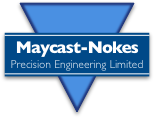Our services
Reverse Engineering
Reverse Engineering
We combine tried and tested casting techniques with the latest technology to recreate legacy components.
We combine tried and tested casting techniques with the latest technology to recreate legacy components.
Maycast-Nokes can recreate legacy parts, combining laser scanning and 3D printing with our precision sand and investment casting processes.
It is becoming increasingly difficult to source accurate, mechanically sound components for older aircraft and road going vehicles.
As the UK’s most versatile aerospace foundry we use our state-of-the-art facilities and AS9100 approved processes to offer a range of services for most types of casting related reverse engineering; from a CAD model creation to fully finished, machined castings.
Case Study (Classic Vehicle restoration)
Maycast-Nokes was approached by one of the world’s leading restorers of classic cars. Operating from a state-of-the-art facility in Essex they specialise in road and race car preparation as well as ‘nut and bolt’ rebuilds of some of the world’s most exotic cars from marques including Bugatti, Ferrari and Lamborghini.
Maycast was tasked with recreating a rare oil filter head casting for a 1960’s Jaguar, using only a damaged sample casting as reference.
On arrival with us reference component was degreased and cleaned before being sent to our metallurgy lab for chemical analysis using spectrometer for material identification. Having selected a suitable replacement metal the sample casting underwent laser scanning in our climate controlled inspection department. Maycast-Nokes offers both CMM (touch probe) and laser scanning to create 3D CAD models from the sample castings. In this instance laser scanning was sufficiently accurate to recreate this type of automotive component.
Having verified the scan, a newly created digital CAD model was then used to create a single impression block mould pattern and associated core boxes. The casting was then created using our usual precision sand casting process before being heat treated, checked for structural integrity using a process called Penetrant Flaw Detection (a form of Non-Destructive Testing) before progressing to final machining in our 5-axis equipped machine shop.
Assigned an identification code for full traceability, the finished part was finally despatched along with a First Article Inspection Report and a copy of the CAD model.











